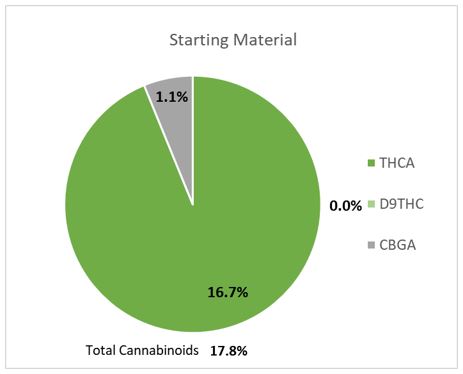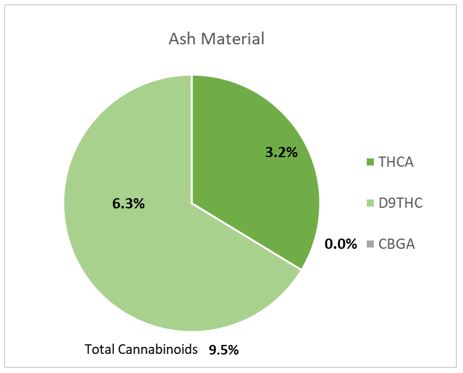Testing For Truth Part 5: How Much THC Is Left in Cannabis Ash?
By Dylan Wilks, CTO
At the California Cannabis Business Conference last month, we had someone approach our booth with an interesting question: If I smoke cannabis, how much THC is left in the ash? She just happened to have both the starting material as well as the leftover ash. Rather than make a guess, we decided to let LightLab answer the question.
Place Your Bets
We weighed 100mg (that’s 0.1g) of both the ash material and the original cannabis sample. Next we added the sample to a vial with some LightLab solvent, shook it up and injected it into LightLab. A few minutes later, we had our answer. While we were waiting for the LightLab to complete the test, we had some friendly bets about what the result would be. Values ranged from no THC left to about half of the starting THC content. One thing we all agreed was that most of the THCA would be decarboxylated into Delta-9 THC from the heat of the flame. THCA is made by the plant and is converted to Delta-9 THC through a reaction that typically involves heat. When cannabis is smoked, it converts from the inactive THCA into active Delta-9 THC.
And the Answer Is…
When the analyzer finished both tests, we had our answer. It was surprisingly close to the upper end of our friendly bet. The results below show the before and after cannabinoid content of the samples. As expected, much of the THCA was converted to Delta-9 THC, though not all. We did note that there was still some unburnt plant material left in the ash sample, so that may account for the relatively high amounts of THC still present in the ash. It apparently pays to smoke that last bit.


Sample Note
One interesting note about the starting material. We noted there was a small amount of CBGA, or Cannabigerolic Acid present. This is the precursor to other cannabinoids. Typically, a plant creates CBGA, and then uses enzymatic processes to convert CBGA further into either THCA or CBDA depending on the plant genetics. CBGA is often found at higher levels in early flowering and by the time it is ready to harvest, almost no CBGA is present. This particular sample may have been harvested a little earlier than it should have in order to get the highest possible THC levels.
